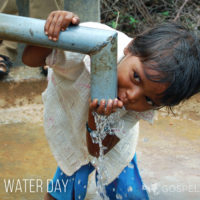WILLS POINT, TX – Gospel for Asia (GFA) issues an extensive Special Report on extreme poverty worldwide, how alleviation and eliminating it is possible, but it is not inevitable.

If the modern world is truly a “global village,” that means everyone on earth is our neighbor—and Jesus was very clear about how we are to treat our neighbors. We have a responsibility to help them out of difficult circumstances.
While issues such as health care, education, the environment, equality for women and protection for endangered children are all major global concerns with their own particular challenges, they are also, in part, fueled by a common force: poverty.
In the United States, $1.90 is mere pocket change—the cost of a serving of wake-up java from your favorite coffee shop. But in other parts of the world, $1.90 represents a bitter cup as the official marker of extreme poverty—the daily income line below which too many struggle to eke out an existence.
Globally, around 736 million people are in this group, many of them children. Lacking adequate housing, hygiene, health care and education because they simply don’t have enough money, they pay a high price: disease, discrimination and, often, early death.
Indeed, poverty might well be viewed as the tip of a Titanic-like iceberg. According to The Borgen Project, poverty’s hidden impacts include:
- “Almost 3 billion people with no access to toilets, and almost 1 billion lack clean drinking water.
- “The poorest 20 percent of the world’s children twice as likely as the richest 20 percent to be stunted by poor nutrition and to die before their fifth birthday.
- “2.7 million newborns worldwide die within their first month of life.
- “161 million children do not attend primary school.”
With such far-ranging impact, it is not surprising, then, that world leaders have declared poverty to be public enemy No. 1. Indeed, they have gone so far as to set a goal of eliminating extreme poverty by 2030. “No Poverty”—which would mean just 3 percent of the world’s population still left surviving on less than $1.90 a day—heads the list of the United Nations’ 17 Sustainable Development Goals, adopted in 2015.
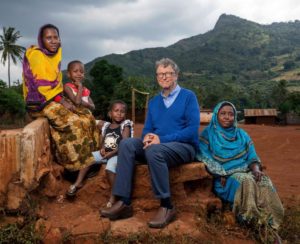
Photo by Jonathan Torgovnik for TIME
Lofty as that may seem, it’s not just wishful thinking. Software-billionaire-turned-philanthropist Bill Gates is among those who think the 2030 deadline is doable.
“We are confident that this is not only possible, but that we will see major breakthroughs along the way, which will provide unprecedented opportunities to people in poor countries,” Gates said. “Indeed, we think their lives will improve faster in the next 15 years than at any other time in history—and that their lives will improve more than anyone else’s.”
Gates’ optimism is based on some solid evidence. The good news is that the number of people below the poverty line has dropped significantly over the last three decades.
“Since 1990, nearly 1.1 billion people have lifted themselves out of extreme poverty,” says the World Bank. It notes that “in areas ranging from child survival to primary school enrollment, the improvements to people’s lives have advanced with a momentum that few could have imagined when the World Bank was founded more than 70 years ago.”
The trend is certainly going in the right direction. But that still leaves 1 in 10 of the world’s population—about the equivalent of every person living in Indianapolis—below that coffee-cup-poverty-zone indicator.
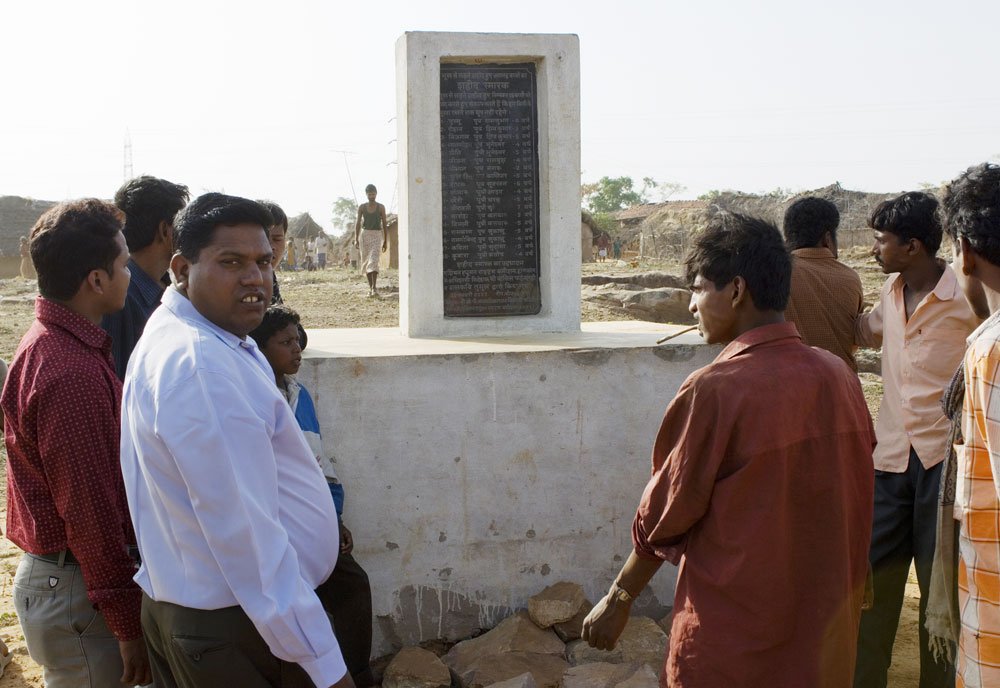
Millions Are Still at Risk
According to the U.S. Agency for International Development, “Progress is heartening, but it is not enough.” Gates himself has cautioned that “while progress is possible, it is not inevitable. Success will require political will, global cooperation, and human ingenuity.”
Like the last stages of a marathon, finishing the task will prove the most difficult part of all. The remaining poorest of the poor will be more difficult to help up and out of their circumstances because they are in parts of the world where poverty is entrenched in an even more complex tangle of roots. Prejudice and inequality have long kept different groups economically disadvantaged, while natural disasters and wars only add to their problems.
Progress in the fight against global poverty can be tracked at the World Poverty Clock, whose graphics show the rate at which people are rising above the $1.90-a-day desperation line in different countries. Meanwhile, trackers at the Brookings Institution think tank warn that poverty is actually likely to rise in almost 30 countries over the next few years.
While the eradication of poverty in parts of the developing world by 2030 is “ambitious, yet achievable,” according to World Bank, it is much less likely to be achieved in what a cautionary World Bank policy paper calls “fragile and conflict-affected countries (FCS)”—those wracked by war and natural disasters. Here, analysts anticipate a “32% poverty rate for fragile states by 2030 given current conditions and trends.”
They warn: “As the difference between the projected poverty rate for the FCS group as a whole and the 3 percent target suggests, most of the countries in the fragile country grouping, or at least enclaves of the poor within them, are at great risk of being ‘left behind’ with respect to the eradication target.”
These “chronically poor” are mainly found in South Asia—where GFA is widely active—and sub-Saharan Africa. “Intensified efforts are required to boost the incomes, alleviate the suffering and build the resilience of those individuals still living in extreme poverty,” notes the World Bank soberly.
There may not be a more fitting time to assess what progress has been made in the war on poverty, and what still needs to be done, than now. The year 2018 marked the 70th anniversary of the signing of the Universal Declaration of Human Rights in Paris.
Excerpts from the
Universal Declaration of Human Rights
“the right to work, to free choice of employment, to just and favorable conditions of work…
“the right to just and favorable remuneration ensuring for himself and his family an existence worthy of human dignity…
“the right to a standard of living adequate for the health and well-being of himself and of his family, including food, clothing, housing and medical care and necessary social services, and the right to security in the event of unemployment, sickness, disability, widowhood, old age or other lack of livelihood in circumstances beyond his control.”
Achieving those goals, in part through eliminating poverty, will come at a price. Leading economist Jeffrey Sachs has calculated that ending extreme poverty worldwide would cost about $175 billion a year. Although that is certainly a hefty figure, it represents less than 1 percent of the combined income of the richest countries in the world—and it is less than a third of the nearly $700 billion spent during the 2017 Christmas holiday season in the United States alone.
Small Steps, Big Change
In the face of such overwhelmingly large numbers, the price of a cup of coffee can seem insignificant—but it doesn’t have to be. Small amounts of money can be leveraged to make a big difference in the lives of the poor, as Gospel for Asia (GFA) knows well.
For the price of just two large frappuccinos, you can buy a pair of chickens that will help lift an Asian family from below the poverty line. The eggs from the chickens can be sold or hatched to provide ongoing income.
That’s not the only livestock-for-livelihood option in GFA’s annual Christmas Gift Catalog. For $65, you can provide a family with a lamb, while $140 purchases a pair of goats, all of which provide milk to sell or drink and offspring to expand the herd. A water buffalo ($460) not only makes plowing fields easier but also produces milk for drinking and dung that can be used as fuel and fertilizer.
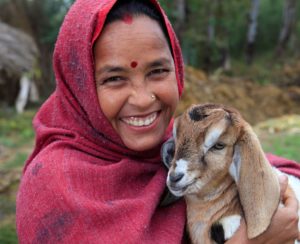
Photo by Russell Powell for Heifer International
Ministry supporters have helped Gospel for Asia (GFA) provide these kinds of poverty-alleviating gifts at Christmastime for more than a decade. So far, almost 2 million families have been helped through gifts that generate income or increase quality of life.
Many other organizations have launched similar programs, prompting media coverage of how “charity gift catalogs are proliferating, offering donors the opportunity to ‘buy’ everything from a goat to a sewing machine to a herd of cows.” Heifer International has been distributing livestock for more than 70 years and has helped more than 31 million impoverished families.
All of those gift purchases combine to help a lot of families, who in turn can have an impact on their wider community. Such was the case with 44-year-old Kanal, a day laborer trying to support his family of three children on his meager earnings of $3 a day.
Then Kanal received a pig through a GFA-supported distribution, and everything changed for his family. The sow delivered eight piglets, seven of which he sold for almost $40 each. From a second litter, Kanal gave a piglet to a neighboring family in need, setting them on an upward cycle out of poverty, too.
The pig he received as a gift unlocked a chain of benefits, Kanal said. With the money gained by selling some of the offspring, “we have bought a goat and chickens, which are also going to be another source of income for our family. We do not have any problems now paying the school fees for our children and meeting all their needs in school. … We also have purchased roofing sheets to construct our house.”
[masterslider id=”14″]An important part of alleviating poverty through income-generating gifts is not only how these practical gifts improve recipients’ circumstances but also how they restore their dignity and sense of value. Rather than leaving them dependent on future help, they are equipped and encouraged to have an active part in creating their own better futures.
Breaking the Chains of Debt
With this in mind, GFA’s poverty-alleviation efforts include general and specific education—from literacy training to hands-on job skills like sewing and welding. Women who receive a sewing machine and begin working as seamstresses can increase their daily income to four or five times what they made doing menial labor.
But even with new skills, many people are kept back because of lack of access to opportunities to better themselves; for example, banks have traditionally been reluctant to provide loans to those without some financial stability and collateral. That severely limits opportunities for self-advancement in places like Pakistan, where only 1 in 5 adults—and just 1 in 14 women—has a financial account.
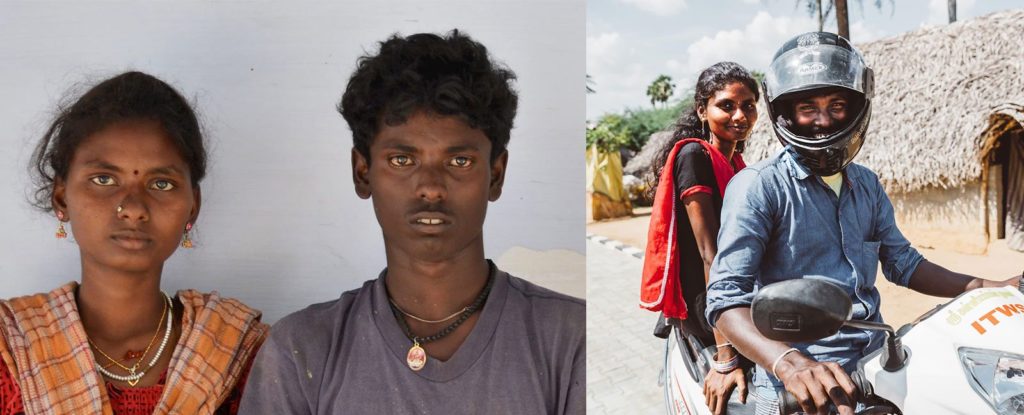
As a result, people have been forced to turn to the informal money lenders when they need to borrow money, leaving them open to being taken advantage of financially. Exorbitant loans have fueled the bonded labor population, estimated to be around 20 million—most of them in South Asia. Typical of the victims is Haresh, who borrowed around $110 from a local landowner to get married.
Subsequent loans for basics like medicine and repairs to the family’s hut, along with interest that topped 100 percent a year, forced Haresh and his family into working 14-hour days with barely enough food and water and little hope of ever being free.
Twenty years later, he and his wife, together with their married children, still worked at a brick kiln for the man who gave them the loan.
“One day my grandchildren will work for the landowner,” said Haresh. “There is no way to repay these debts. We will only be free when we die.”
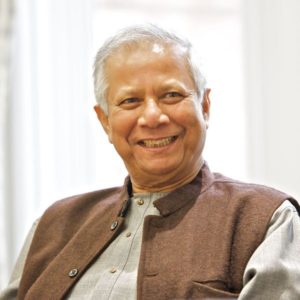
Photo by University of Salford Press Office / CC BY 2.0
Such all-too-common stories provided inspiration for the microloan or microfinance movement born in the 1970s that sought to provide access to financial resources for the disenfranchised, especially women. Muhammad Yunus founded what became the Grameen Bank in the 1970s, making small loans to women in Bangladesh.
The idea has since spread to other parts of the world, with Yunus and Grameen jointly being awarded the Nobel Prize in 2006 for their part in developing micro-credit into “an ever more important instrument in the struggle against poverty.” Many organizations have embraced a similar model, including GFA’s field partners, which provide small loans to help women start income-generating projects.
With financial institutions also recognizing a market for small loans, microfinance has collectively grown from its small beginnings and has become a big business. According to the Institute for Microfinance Research, there are more than 75 million micro-borrowers worldwide.
“Using a low-cost microloan to repair a leaky roof, purchase school clothes for their children, maintain a farm and keep food on the table, or pay off a hospital bill can give poverty-stricken communities a fighting chance,” says the group. “Microloans in the form of farm financing have proven doubly effective in that both increased income and food supply are provided as a result of the loan.”
However, not all of the early promise of microfinance has been realized. While a study by big bank ING of small loans in India and Ghana found “many positive effects from having access to financial services,” it also concluded that “microfinance is not the silver bullet to poverty it once promised to be.”
More cautiously, economics professor Dean Karlan co-wrote a 2016 New York Times opinion piece that noted that six randomized evaluations of microloan programs “found that microloans, though helpful for the poor, didn’t actually increase income for the average borrower.
However, in the opinion of Simone Schaner, an economist at Dartmouth University, while microloans may not have proved to be as transformative as initially hoped, neither should they be written off.
“Microfinance is a victim of an unfortunate tendency in development, which is that everybody wants to find a silver bullet to solve poverty,” she said. “And the fact is that poverty is this massive, incredibly difficult problem. There is no silver bullet.”
The microfinance movement was shaken by a crisis in one of India’s states in 2012, when a string of suicides among small loan recipients was linked to high interest rates, prompting the state to ban the practice there. Yet two economists who looked into the consequences of that move found the loss of credit had a measurable impact on the overall economy.
“Because people had less money to spend, consumer spending, investment, and entrepreneurship also dropped,” Emily Breza and Cynthia Kinnan noted in their report in 2018. The episode showed that “microfinance, despite its small loan sizes, can have meaningful impacts on rural economies.”
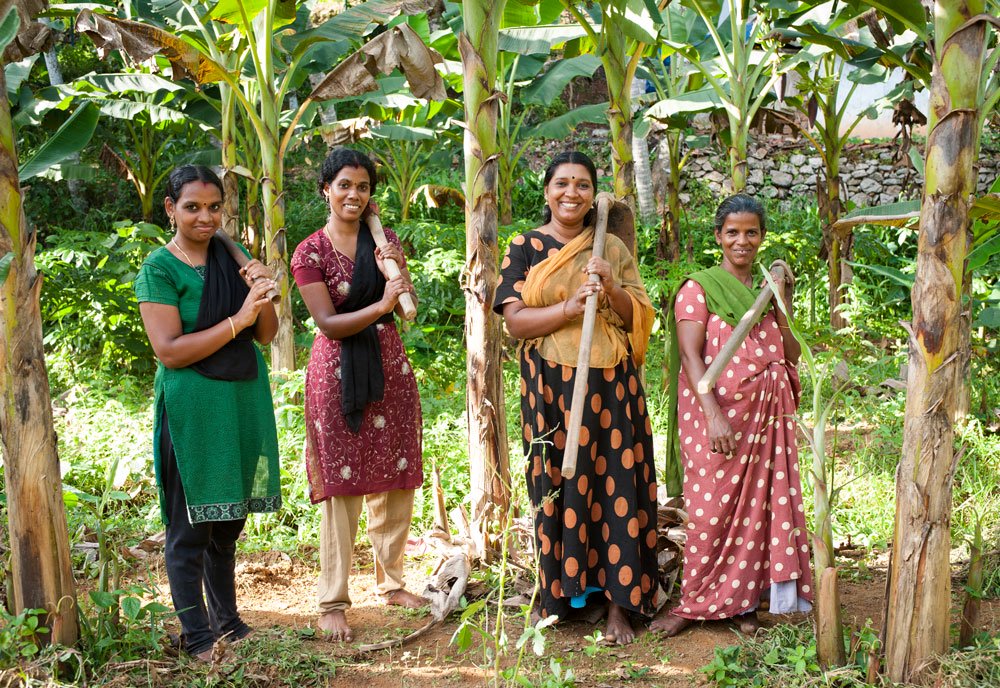
The ‘Good Neighbor’ Effect
One reason microfinance may not always seem to be clearly beneficial is hinted at in a 2013 study of three programs in Namibia. It found the approach “playing a positive role in alleviating poverty amongst its members,” though it also noted that many participants who reported improved living standards said their income still wasn’t enough.
“This shows that income is not the only measurement of living standards,” the report observed. “The increase of members’ income also led to an increase in the number of household members that each member supports. … an average member … supports at least three to four household members who depend on him or her for food, clothes and shelter, and, on average, each member supports three family members at school.”
This “good neighbor” phenomenon has been widely observed by those engaged in relief and development work—that as people start to climb out of poverty, they can often find themselves carrying others with them, in effect shortening their own strides to help others. For example, one person employed at a tourist lodge in Ethiopia “can lift up to 10 family members out of poverty,” reported the United Nations’ World Tourism Organization (WTO).
Helping an individual out of poverty, whether by giving them training or tools or a loan, doesn’t only impact the recipient. It can also be good for those providing the resources, helping them realize they are making a dent in a big problem that might otherwise overwhelm them and keep them from action.
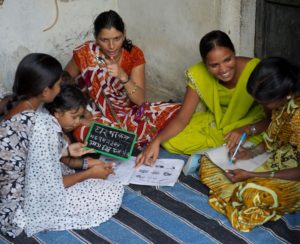
For Corie, a Texas mother of three, providing resources for some of those in need through GFA’s Christmas Gift Catalog has been “a tangible way for my kids to see that Christmas is about more than presents.” They are helping incarnate God’s love through practical gifts that improve the recipients’ quality of life.
Brad Goode, a pastor in Florida, was drawn to making microloans through “the simplicity of the plan and the magnitude of the impact,” helping one young man in Honduras launch a potato chip company and another buy chickens to sell eggs.
“There are times to give handouts, but I think more often a hand up is the better path forward for everybody,” Brad comments. “I think it’s also human nature that if you work for something, you appreciate it more. For folks paying back these loans, there is an intangible pride and commitment that begins to shape the person and not just the outcome of making a few bucks. It’s an investment in a business but also in people.”
Ethical Consumption
Providing income-generating gifts, tools, training or small business loans are all ways of taking direct action to support poverty alleviation, but they are not the only things people in the West can do. We can move beyond being charitable givers to becoming ethical consumers, spending our everyday money in ways that can have an impact on poverty.
The fair trade movement has grown significantly over the past couple of decades. It is now a $9-billion-a-year enterprise, as shoppers buy everything from coffee and chocolate to clothes and gifts from suppliers who seek to help ensure “a living wage and living income for producers and workers.”
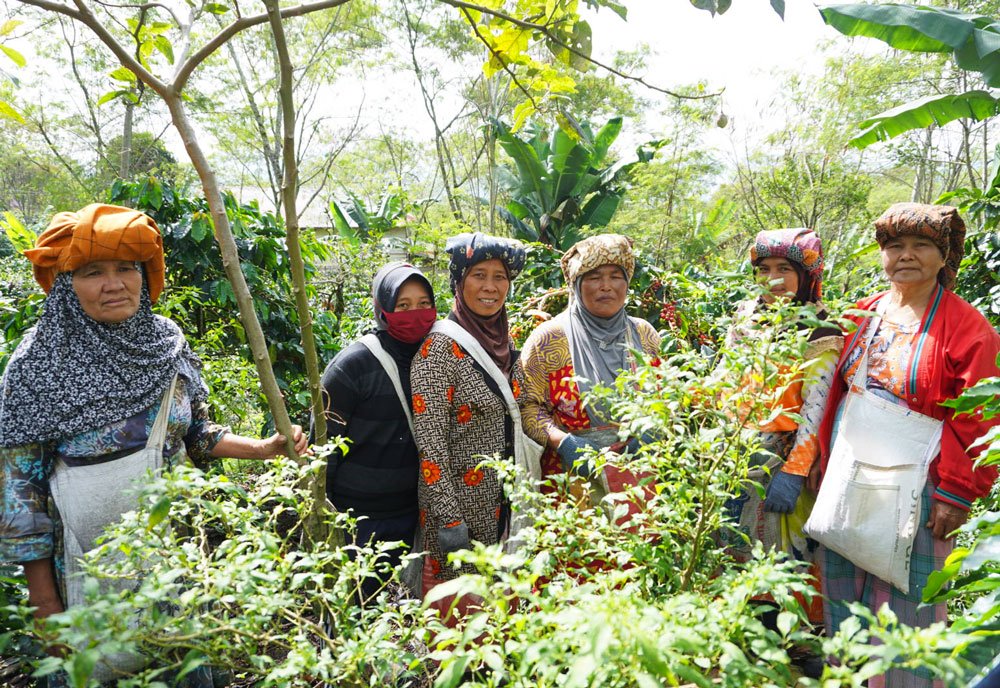
Meanwhile, a growing number of big-name businesses are reviewing their global supply chain practices to ensure they are not supporting sweatshop conditions further down the line. The move is in part an effort to appeal to the rise of “conscientious consumers,” with a 2015 survey finding that 9 in 10 Millennials would switch brands to one associated with a more ethical cause. In another study, researchers discovered that supermarket sales of two coffees rose by 10 percent when they carried a Fair Trade label rather than a generic one.
Playing a part in eradicating poverty isn’t just the right thing for companies to do; it’s also good business.
“The world’s poor are now viewed as the largest untapped market on earth,” says The Borgen Project. “As people transition from barely surviving into being consumers of goods and products, U.S. companies gain new populations to which they can market their products.”
Fight Poverty Together
Another way of investing in poverty alleviation is by supporting innovation startups. Kenyan Anthony Mutua Gofunded the development of his battery-charging shoes, earning an Africa Youth Award. A chip in the soles helps power mobile phones, which have been called “the most effective technological weapon against poverty” for connecting users to banking, health care, and education resources previously inaccessible.
Even taking a vacation can help with poverty alleviation in a small way if it is done thoughtfully, making tourism “a catalyst for positive change,” says the WTO. Because it is labor-intensive, tourism creates a lot of service jobs, which many times are more convenient, less demanding and safer for people living near resorts, according to the organization’s “Poverty Alleviation Through Tourism” report.
If the idea of making a dent in world poverty seems overwhelming, perhaps think instead of just trying to be a good neighbor to someone in difficult circumstances in another part of the world. Among the small steps you might make are these:
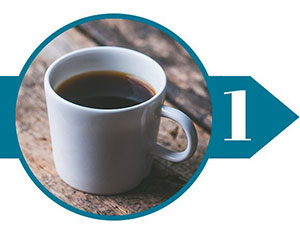 Forgo that special cup of coffee for a season and donate the money you save to an organization or charity involved in poverty-alleviation efforts.
Forgo that special cup of coffee for a season and donate the money you save to an organization or charity involved in poverty-alleviation efforts.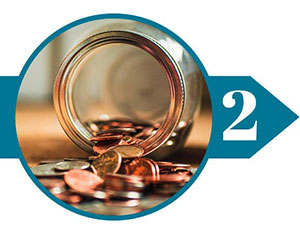 Identify one long-term change you could make in your spending to free up money to support the ongoing work among the poor facilitated by GFA or other groups.
Identify one long-term change you could make in your spending to free up money to support the ongoing work among the poor facilitated by GFA or other groups.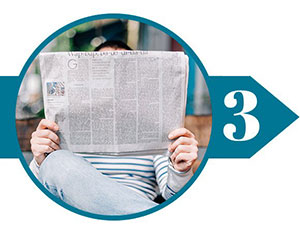 Educate yourself more about the economic, political, cultural and other issues that create and maintain inequality in some parts of the world.
Educate yourself more about the economic, political, cultural and other issues that create and maintain inequality in some parts of the world. Pray for the hearts of world leaders to be turned to the poor and for them to find the political and economic will to make decisions that undo structural and systematic obstacles to development.
Pray for the hearts of world leaders to be turned to the poor and for them to find the political and economic will to make decisions that undo structural and systematic obstacles to development.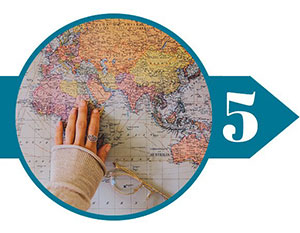 “Adopt” a specific “neighbor nation” God puts on your heart on which to focus your prayers, advocacy and giving.
“Adopt” a specific “neighbor nation” God puts on your heart on which to focus your prayers, advocacy and giving.Small actions like these in the face of massive problems may seem insignificant, but they are not to God. In the story of the sheep and the goats (Matthew 25), Jesus said that anyone who helped someone who was thirsty or hungry or needing clothes was actually helping Him.
An $8 solar lantern won’t end poverty, concedes John Hatch, founder of microfinance lender and anti-poverty group FINCA International. But “it will give an ultra-poor family a real ‘lift,’ ” he says. “Children will be able to study longer. Households will be safer. Expensive kerosene costs can be redirected to other household needs. This lift can create new incentives for an ultra-poor family—to read, to work, to dream.”
Such has been the case for Bhrithi, a young Asian widow with two sons who struggled to get by selling vegetables from a mat at the side of the road. When the local authorities decided to widen the street and evict her, she had to find somewhere else to trade.
Her options were severely limited, until a GFA-supported pastor in the area decided she should receive a gift from the organization’s Christmas Gift Catalog—a $120 pull cart. That simple piece of equipment has proved to be invaluable.
“With the pull cart, I can travel around and sell onions and potatoes,” said Bhrithi, who was moved by the help she received. “Wherever I find a suitable place, I stand and sell. My earnings have also increased.”
The gift she received was simple, yet it equipped her enough to dramatically change her life. The problem of global poverty is huge, but if we each do our part, we can change the world.
To read more news on Poverty Alleviation on MissionsBox News, go here.
This Special Report originally appeared on gfa.org.
Learn more about how the simple gift of an income-generating animal can be the turning point for an impoverished family—one their family has likely been desiring for generations, rescuing them from poverty.



